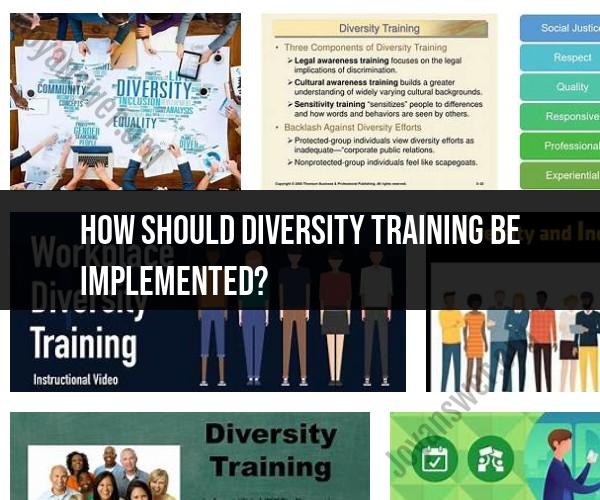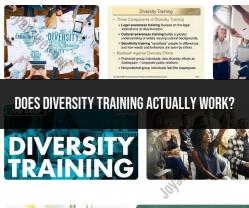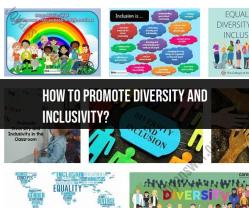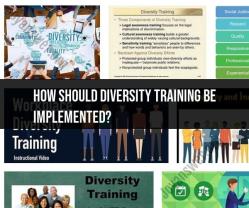How should diversity training be implemented?
Diversity training plays a crucial role in fostering inclusion and creating a more equitable and accepting workplace or community. To be effective, diversity training should go beyond mere awareness and address biases, promote understanding, and encourage actionable change. In this article, we will explore strategies for implementing effective diversity training programs.
Assessment and Customization:
Assess Needs: Begin by assessing the specific diversity and inclusion needs of your organization or community. Conduct surveys, focus groups, or interviews to understand the unique challenges and opportunities.
Customize Content: Tailor training content to address the identified needs, ensuring that it is relevant and relatable to participants.
Engagement and Participation:
Interactive Workshops: Utilize interactive workshops, group discussions, and role-playing exercises to actively engage participants. This promotes deeper understanding and empathy.
Real-Life Scenarios: Use real-life scenarios and case studies to illustrate the impact of biases and discrimination, making the training more relatable.
Expert Facilitators:
Experienced Facilitators: Enlist experienced diversity trainers or facilitators who can guide discussions, answer questions, and manage potential conflicts effectively.
Diverse Facilitators: Whenever possible, have facilitators from diverse backgrounds to offer different perspectives and experiences.
Continuous Learning:
Ongoing Programs: Implement ongoing diversity training programs rather than one-time events. Regular sessions keep the topic at the forefront of participants' minds.
Microlearning: Incorporate microlearning modules that participants can access at their convenience, providing bite-sized lessons on various diversity and inclusion topics.
Intersectionality and Multiple Identities:
- Address Intersectionality: Recognize that individuals have multiple aspects to their identity (e.g., race, gender, sexual orientation, disability). Training should acknowledge and respect these intersections.
Inclusive Language and Communication:
Model Inclusivity: Ensure that trainers and training materials use inclusive language and communication styles to set a positive example.
Active Listening: Teach active listening skills as part of the training to encourage participants to genuinely hear and understand one another.
Measurable Objectives:
Set Clear Goals: Establish measurable objectives for diversity training, such as increased representation of underrepresented groups in leadership roles or reduced instances of biased behavior.
Regular Evaluation: Periodically assess the training's impact through surveys and feedback to gauge progress and identify areas for improvement.
Psychological Safety:
- Create Safe Spaces: Emphasize the importance of creating psychologically safe environments where participants feel comfortable sharing their thoughts, concerns, and experiences.
Accountability:
Hold Participants Accountable: Ensure that participants understand their role in fostering diversity and inclusion and are held accountable for their actions.
Leadership Commitment: Encourage leadership to actively champion diversity and inclusion efforts within the organization.
Continuous Improvement:
Feedback Loop: Establish a feedback loop where participants can provide input on the training's effectiveness and suggest improvements.
Adapt and Evolve: Be open to adapting and evolving the training program based on feedback and changing needs.
Effective diversity training is an essential tool for fostering inclusion and creating diverse, equitable, and accepting environments. By assessing needs, engaging participants, and promoting ongoing learning, organizations and communities can take meaningful steps toward building a more inclusive and equitable future. Remember that diversity training is not a one-size-fits-all solution and should be customized to meet the unique needs of your audience.







